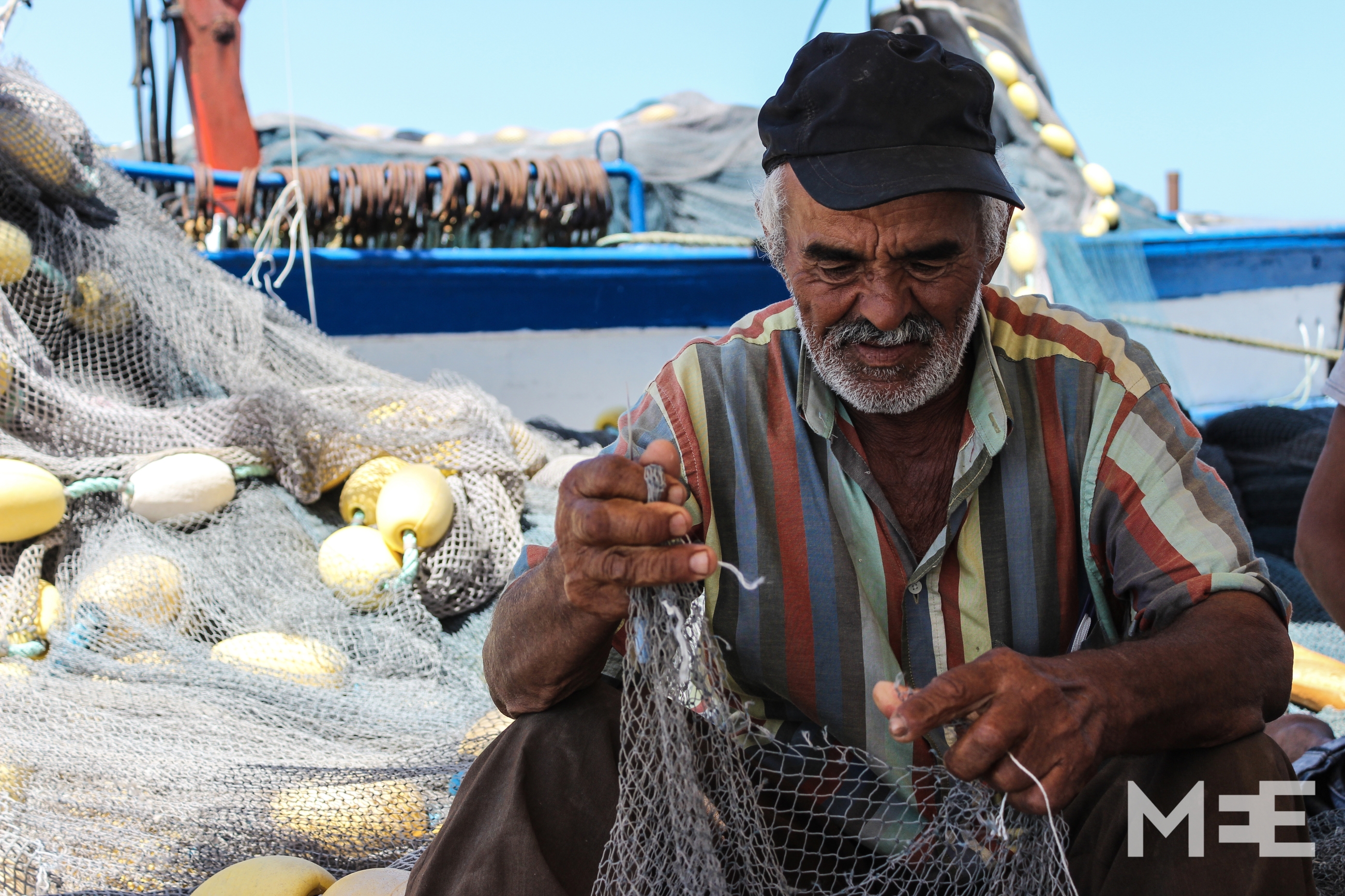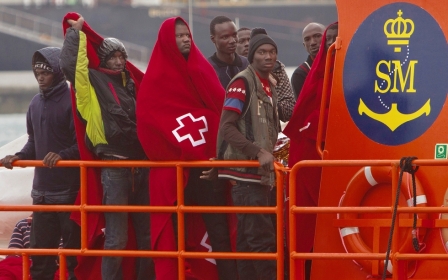The migrants' peril and the kindness of Tunisian fishermen

In the Tunisian port city of Zarzis, Ahmed sits among a pile of nets, hiding from the searing desert sun beneath a makeshift canvas canopy. His nimble fingers push a spool of thread in and out of the netting, getting it ready to go back out to sea.
“Migrants? I see them coming all the time. Even when I don’t see them myself, someone is always telling me how they brought them into port,” Ahmed says. “The boats come from Libya. They’re all from Libya.”
Working just 60 kilometres from the Libyan coast, Ahmed and his fellow fishermen have watched these boats go by for years. The sight of migrants fleeing to Europe is not new. But the number of migrants is.
In 2014, the UN Commission on Human Rights (UNHCR) estimated that nearly 220,000 migrants made their way to Europe by sea, compared to less than 60,000 the year before. These days, the majority of them slip through Libya’s now porous coastline where smugglers operate virtually unchallenged by the country’s failed state.
For decades, Muammar Gaddafi kept the Libyan coastline tightly controlled, but since his fall from power in 2011, emigration from Libya has soared. The country’s long and remote land borders make it easily accessible to migrants fleeing eastern and central Africa, as well as those escaping the newer conflicts of Yemen and Syria.
“They’re normally Somalis, Eritreans and Sudanese,” Ahmed says. “But recently we’ve even seen Syrians and Egyptians.”
These new waves of immigrants are overwhelming the network that has smuggled people over by sea for the last two decades. All too often now, when Ahmed takes his nets out to sea, he is flagged down by frantic calls from boats, their hulls barely bobbing above the water line. While Tunisia has been working at upgrading and expanding its navy, adding 22 new vessels to its fleet since 2013, it remains limited in its capacity to patrol the international waters beyond its coastline. In many cases, fishermen like Ahmed are the first to spot these boats and alert the coastguard.
If the boats slip past the Tunisian coast, they have no hope for rescue until they reach the range of the Italian coast guard - several hundred kilometres away. In 2013, Italy launched Mare Nostrum, a 114 million-euro operation to rescue migrants in peril, reduce human trafficking and increase the overall security of the Mediterranean. The operation succeeded in rescuing 150,000 migrants and arresting 330 smugglers. The EU cancelled its funding for the operation a year later however, replacing it with the far less costly Frontex Triton programme.
Triton is not designed as a search and rescue operation and does not actively seek out migrant ships in distress. For this reason, it falls once again to the Italian coast guard to wait for and rescue migrants in the Mediterranean. Often however, by the time these boats make it within the Italian coast guard’s reach, it’s too late. According a report by UNHCR, so far this year 31,000 have attempted to cross into Europe. Of those, the Italian coast guard rescued 8,500 - and 900 have drowned. This is especially concerning as peak season for Mediterranean migration has barely started. Amnesty International says the current number of deaths are “almost 53 times more than the same period in 2014.”
Along with many other human rights organisations, Human Rights Watch has been critical of the EU’s approach to this recent wave of illegal immigration: “A real commitment to saving lives and protecting refugees would not focus on preventing departures or containing people fleeing conflict and persecution, but would start with restoring the Mediterranean search and rescue operation at least to its 2014 level,” HRW said in a recent statement.
The EU’s latest plan to curb this pattern of dangerous illegal migration is to launch a military attack on the smugglers themselves in Libyan waters. The proposal has been submitted to the UN security council for review. If approved, Italian naval forces would lead the attack, accompanied by 10 other EU countries.
In the meantime however, the lives of hundreds of migrants will continue to fall into the humble hands of fishermen from Zarzis.
“Of course we help them,” Ahmed says. “What are we going to do? Leave them? They can’t even swim.”
Middle East Eye propose une couverture et une analyse indépendantes et incomparables du Moyen-Orient, de l’Afrique du Nord et d’autres régions du monde. Pour en savoir plus sur la reprise de ce contenu et les frais qui s’appliquent, veuillez remplir ce formulaire [en anglais]. Pour en savoir plus sur MEE, cliquez ici [en anglais].




